-
Executive Summary
-
Market Introduction
-
Definition 16
-
Scope of the Study 16
-
List of Assumptions 17
-
Market Structure 18
-
Market Attractive Analysis 18
-
Global Diesel Engine Catalyst Market, by Technology 19
-
Global Diesel Engine Catalyst Market, by Application 20
-
Global Diesel Engine Catalyst Market, by Sales Channel 21
-
Key Buying Criteria 21
-
Research Methodology
-
Research Process 22
-
Primary Research 23
-
Secondary Research 24
-
Market Size Estimation 25
-
Forecast Model 25
-
Market Insights
-
Market Dynamics
-
Introduction 28
-
Drivers 28
- Stringent Air Quality Regulations and Penalties Imposed on Automotive OEMs 28
- Demand for Commercial Vehicles 29
- Drivers Impact Analysis 30
-
Restraint 31
- Increase in the Number of BEVs 31
- Restraint Impact Analysis 31
-
Opportunity 32
- Innovation in Diesel Engine Catalysts 32
-
Challenge 33
- High Raw Material Prices 33
-
Market Factor Analysis
-
Porter’s Five Forces Model 34
- Threat of New Entrants 35
- Bargaining Power of Suppliers 35
- Bargaining Power of Buyers 35
- Threat of Substitutes 35
- Rivalry 35
-
Supply Chain Analysis 36
- Design and Development 36
- Raw Material/Component Supply 36
- Diesel Engine Catalyst Manufacture/Assembly 36
- Diesel Engine Catalyst Distribution 37
- End Use 37
-
Technology Trends: 38
- Innovations in automotive catalysts 38
-
Patent Trends: Diesel Engine Catalyst 39
-
Regulatory Landscape 42
-
Global Diesel Engine Catalyst Market, by Technology
-
Overview 44
-
DOC 44
-
DPF 44
-
SCR 44
-
Others 44
-
Global Diesel Engine Catalyst Market, by Application
-
Overview 46
-
On-Road 46
-
Off-Road 46
-
Global Diesel Engine Catalyst Market, by Sales Channel
-
Overview 48
-
OEM 48
-
Aftermarket 48
-
Diesel Engine Catalyst, After Sales Service Overview 49
-
Factors affecting the Diesel Engine Catalyst After Sales Service 50
- Part Warranty 50
- Availability of Spare Parts 50
- Average Vehicle Life 50
-
Global Diesel Engine Catalyst Market, by Region
-
Introduction 51
-
North America 52
- US 55
- Canada 57
- Mexico 59
-
Europe 61
- Germany 64
- France 66
- Italy 68
- UK 70
- Rest of Europe 72
-
Asia-Pacific 75
- China 78
- Japan 81
- India 83
- Rest of Asia-Pacific 85
-
Rest of the World (RoW) 87
- Middle East & Africa 90
- South America 92
-
Competitive Landscape
-
Competitive Overview 95
-
Global Diesel Engine Catalyst Market, Share Analysis, 2023 (%) 96
-
Competitive Benchmarking 96
-
Key Developments and Growth Strategies 97
-
Company Profiles
-
Magneti Marelli S.p.A. 98
- Company Overview 100
- Financial Overview 101
- Products/Services Offered 101
- Key Developments 102
- SWOT Analysis 102
- Key Strategies 102
-
BASF SE 103
- Company Overview 103
- Financial Overview 104
- Products/Services Offered 104
- Key Developments (2023-2032) 105
- SWOT Analysis 105
- Key Strategies 105
-
SANGO Co., Ltd 106
- Company Overview 106
- Financial Overview 106
- Products/Services Offered 107
- Key Developments (2023-2032) 107
- SWOT Analysis 107
- Key Strategies 107
-
Johnson Matthey 98
- Company Overview 98
- Financial Overview 99
- Products Offered 99
- Key Developments 100
- SWOT Analysis 100
- Key Strategies 100
-
Umicore N.V. 108
- Company Overview 108
- Financial Overview 108
- Products/Services Offered 109
- Key Developments (2023-2032) 110
- SWOT Analysis 110
- Key Strategies 110
-
Perkins Engines Company Limited 111
- Company Overview 111
- Financial Overview 111
- Products/Services Offered 111
- Key Developments 111
-
CDTi Advanced Materials, Inc. 112
- Company Overview 112
- Financial Overview 112
- Products/Services Offered 113
- Key Developments 113
-
Nett Technologies Inc. 114
- Company Overview 114
- Financial Overview 114
- Products/Services Offered 114
- Key Developments (2023-2032) 114
-
Eberspächer 115
- Company Overview 115
- Financial Overview 115
- Products/Services Offered 116
- Key Developments (2023-2032) 116
-
Continental AG 117
- Company Overview 117
- Financial Overview 118
- Products Offered 119
- Key Developments 119
-
-
List of Tables
-
LIST OF ASSUMPTIONS 17
-
MAJOR GRANTED PATENTS ON DIESEL ENGINE CATALYST (31 JULY 2015–31 JULY 2019) 39
-
GLOBAL DIESEL ENGINE CATALYST: REGULATORY LANDSCAPE 42
-
GLOBAL DIESEL ENGINE CATALYST MARKET, BY TECHNOLOGY, 2023-2032 (USD MILLION) 45
-
GLOBAL DIESEL ENGINE CATALYST MARKET, BY APPLICATION, 2023-2032 (USD MILLION) 46
-
SUB-SEGMENT: GLOBAL DIESEL ENGINE CATALYST MARKET, BY ON-ROAD, 2023-2032 (USD MILLION) 47
-
SUB-SEGMENT: GLOBAL DIESEL ENGINE CATALYST MARKET, BY OFF-ROAD, 2023-2032 (USD MILLION) 47
-
GLOBAL DIESEL ENGINE CATALYST MARKET, BY SALES CHANNEL, 2023-2032 (USD MILLION) 49
-
GLOBAL DIESEL ENGINE CATALYST MARKET, BY REGION, 2023-2032 (USD MILLION) 51
-
NORTH AMERICA: DIESEL ENGINE CATALYST MARKET, BY COUNTRY, 2023-2032 (USD MILLION) 52
-
NORTH AMERICA: DIESEL ENGINE CATALYST MARKET, BY TECHNOLOGY, 2023-2032 (USD MILLION) 53
-
NORTH AMERICA: DIESEL ENGINE CATALYST MARKET, BY APPLICATION, 2023-2032 (USD MILLION) 53
-
SUB-SEGMENT: NORTH AMERICA: DIESEL ENGINE CATALYST MARKET, BY ON-ROAD, 2023-2032 (USD MILLION) 53
-
SUB-SEGMENT: NORTH AMERICA: DIESEL ENGINE CATALYST MARKET, BY OFF-ROAD, 2023-2032 (USD MILLION) 54
-
NORTH AMERICA: DIESEL ENGINE CATALYST MARKET, BY SALES CHANNEL, 2023-2032 (USD MILLION) 54
-
US: DIESEL ENGINE CATALYST MARKET, BY TECHNOLOGY, 2023-2032 (USD MILLION) 55
-
US: DIESEL ENGINE CATALYST MARKET, BY APPLICATION, 2023-2032 (USD MILLION) 55
-
SUB-SEGMENT: US: DIESEL ENGINE CATALYST MARKET, BY ON-ROAD, 2023-2032 (USD MILLION) 56
-
SUB-SEGMENT: US: DIESEL ENGINE CATALYST MARKET, BY OFF-ROAD, 2023-2032 (USD MILLION) 56
-
US: DIESEL ENGINE CATALYST MARKET, BY SALES CHANNEL, 2023-2032 (USD MILLION) 56
-
CANADA: DIESEL ENGINE CATALYST MARKET, BY TECHNOLOGY, 2023-2032 (USD MILLION) 57
-
CANADA: DIESEL ENGINE CATALYST MARKET, BY APPLICATION, 2023-2032 (USD MILLION) 57
-
SUB-SEGMENT: CANADA: DIESEL ENGINE CATALYST MARKET, BY ON-ROAD, 2023-2032 (USD MILLION) 57
-
SUB-SEGMENT: CANADA: DIESEL ENGINE CATALYST MARKET, BY OFF-ROAD, 2023-2032 (USD MILLION) 58
-
CANADA: DIESEL ENGINE CATALYST MARKET, BY SALES CHANNEL, 2023-2032 (USD MILLION) 58
-
MEXICO: DIESEL ENGINE CATALYST MARKET, BY TECHNOLOGY, 2023-2032 (USD MILLION) 59
-
MEXICO: DIESEL ENGINE CATALYST MARKET, BY APPLICATION, 2023-2032 (USD MILLION) 59
-
SUB-SEGMENT: MEXICO: DIESEL ENGINE CATALYST MARKET, BY ON-ROAD, 2023-2032 (USD MILLION) 59
-
SUB-SEGMENT: MEXICO: DIESEL ENGINE CATALYST MARKET, BY OFF-ROAD, 2023-2032 (USD MILLION) 60
-
MEXICO: DIESEL ENGINE CATALYST MARKET, BY SALES CHANNEL, 2023-2032 (USD MILLION) 60
-
EUROPE: DIESEL ENGINE CATALYST MARKET, BY COUNTRY, 2023-2032 (USD MILLION) 61
-
EUROPE: DIESEL ENGINE CATALYST MARKET, BY TECHNOLOGY, 2023-2032 (USD MILLION) 62
-
EUROPE: DIESEL ENGINE CATALYST MARKET, BY APPLICATION, 2023-2032 (USD MILLION) 62
-
SUB-SEGMENT: EUROPE: DIESEL ENGINE CATALYST MARKET, BY ON-ROAD, 2023-2032 (USD MILLION) 62
-
SUB-SEGMENT: EUROPE: DIESEL ENGINE CATALYST MARKET, BY OFF-ROAD, 2023-2032 (USD MILLION) 63
-
EUROPE: DIESEL ENGINE CATALYST MARKET, BY SALES CHANNEL, 2023-2032 (USD MILLION) 63
-
GERMANY: DIESEL ENGINE CATALYST MARKET, BY TECHNOLOGY, 2023-2032 (USD MILLION) 64
-
GERMANY: DIESEL ENGINE CATALYST MARKET, BY APPLICATION, 2023-2032 (USD MILLION) 64
-
SUB-SEGMENT: GERMANY: DIESEL ENGINE CATALYST MARKET, BY ON-ROAD, 2023-2032 (USD MILLION) 65
-
SUB-SEGMENT: GERMANY: DIESEL ENGINE CATALYST MARKET, BY OFF-ROAD, 2023-2032 (USD MILLION) 65
-
GERMANY: DIESEL ENGINE CATALYST MARKET, BY SALES CHANNEL, 2023-2032 (USD MILLION) 65
-
FRANCE: DIESEL ENGINE CATALYST MARKET, BY TECHNOLOGY, 2023-2032 (USD MILLION) 66
-
FRANCE: DIESEL ENGINE CATALYST MARKET, BY APPLICATION, 2023-2032 (USD MILLION) 66
-
SUB-SEGMENT: FRANCE: DIESEL ENGINE CATALYST MARKET, BY ON-ROAD, 2023-2032 (USD MILLION) 66
-
SUB-SEGMENT: FRANCE: DIESEL ENGINE CATALYST MARKET, BY OFF-ROAD, 2023-2032 (USD MILLION) 67
-
FRANCE: DIESEL ENGINE CATALYST MARKET, BY SALES CHANNEL, 2023-2032 (USD MILLION) 67
-
ITALY: DIESEL ENGINE CATALYST MARKET, BY TECHNOLOGY, 2023-2032 (USD MILLION) 68
-
ITALY: DIESEL ENGINE CATALYST MARKET, BY APPLICATION, 2023-2032 (USD MILLION) 68
-
SUB-SEGMENT: ITALY: DIESEL ENGINE CATALYST MARKET, BY ON-ROAD, 2023-2032 (USD MILLION) 69
-
SUB-SEGMENT: ITALY: DIESEL ENGINE CATALYST MARKET, BY OFF-ROAD, 2023-2032 (USD MILLION) 69
-
ITALY: DIESEL ENGINE CATALYST MARKET, BY SALES CHANNEL, 2023-2032 (USD MILLION) 69
-
UK: DIESEL ENGINE CATALYST MARKET, BY TECHNOLOGY, 2023-2032 (USD MILLION) 70
-
UK: DIESEL ENGINE CATALYST MARKET, BY APPLICATION, 2023-2032 (USD MILLION) 70
-
SUB-SEGMENT: UK: DIESEL ENGINE CATALYST MARKET, BY ON-ROAD, 2023-2032 (USD MILLION) 71
-
SUB-SEGMENT: UK: DIESEL ENGINE CATALYST MARKET, BY OFF-ROAD, 2023-2032 (USD MILLION) 71
-
UK: DIESEL ENGINE CATALYST MARKET, BY SALES CHANNEL, 2023-2032 (USD MILLION) 71
-
REST OF EUROPE: DIESEL ENGINE CATALYST MARKET, BY TECHNOLOGY, 2023-2032 (USD MILLION) 72
-
REST OF EUROPE: DIESEL ENGINE CATALYST MARKET, BY APPLICATION, 2023-2032 (USD MILLION) 72
-
SUB-SEGMENT: REST OF EUROPE: DIESEL ENGINE CATALYST MARKET, BY ON-ROAD, 2023-2032 (USD MILLION) 72
-
SUB-SEGMENT: REST OF EUROPE: DIESEL ENGINE CATALYST MARKET, BY OFF-ROAD, 2023-2032 (USD MILLION) 73
-
REST OF EUROPE: DIESEL ENGINE CATALYST MARKET, BY SALES CHANNEL, 2023-2032 (USD MILLION) 73
-
ASIA-PACIFIC: DIESEL ENGINE CATALYST MARKET, BY COUNTRY, 2023-2032 (USD MILLION) 75
-
ASIA-PACIFIC: DIESEL ENGINE CATALYST MARKET, BY TECHNOLOGY, 2023-2032 (USD MILLION) 76
-
ASIA-PACIFIC: DIESEL ENGINE CATALYST MARKET, BY APPLICATION, 2023-2032 (USD MILLION) 76
-
SUB-SEGMENT: ASIA-PACIFIC: DIESEL ENGINE CATALYST MARKET, BY ON-ROAD, 2023-2032 (USD MILLION) 76
-
SUB-SEGMENT: ASIA-PACIFIC: DIESEL ENGINE CATALYST MARKET, BY OFF-ROAD, 2023-2032 (USD MILLION) 77
-
ASIA-PACIFIC: DIESEL ENGINE CATALYST MARKET, BY SALES CHANNEL, 2023-2032 (USD MILLION) 77
-
CHINA: DIESEL ENGINE CATALYST MARKET, BY TECHNOLOGY, 2023-2032 (USD MILLION) 78
-
CHINA: DIESEL ENGINE CATALYST MARKET, BY APPLICATION, 2023-2032 (USD MILLION) 78
-
SUB-SEGMENT: CHINA: DIESEL ENGINE CATALYST MARKET, BY ON-ROAD, 2023-2032 (USD MILLION) 79
-
SUB-SEGMENT: CHINA: DIESEL ENGINE CATALYST MARKET, BY OFF-ROAD, 2023-2032 (USD MILLION) 79
-
CHINA: DIESEL ENGINE CATALYST MARKET, BY SALES CHANNEL, 2023-2032 (USD MILLION) 79
-
JAPAN: DIESEL ENGINE CATALYST MARKET, BY TECHNOLOGY, 2023-2032 (USD MILLION) 81
-
JAPAN: DIESEL ENGINE CATALYST MARKET, BY APPLICATION, 2023-2032 (USD MILLION) 81
-
SUB-SEGMENT: JAPAN: DIESEL ENGINE CATALYST MARKET, BY ON-ROAD, 2023-2032 (USD MILLION) 82
-
SUB-SEGMENT: JAPAN: DIESEL ENGINE CATALYST MARKET, BY OFF-ROAD, 2023-2032 (USD MILLION) 82
-
JAPAN: DIESEL ENGINE CATALYST MARKET, BY SALES CHANNEL, 2023-2032 (USD MILLION) 82
-
INDIA: DIESEL ENGINE CATALYST MARKET, BY TECHNOLOGY, 2023-2032 (USD MILLION) 83
-
INDIA: DIESEL ENGINE CATALYST MARKET, BY APPLICATION, 2023-2032 (USD MILLION) 83
-
SUB-SEGMENT: INDIA: DIESEL ENGINE CATALYST MARKET, BY ON-ROAD, 2023-2032 (USD MILLION) 83
-
SUB-SEGMENT: INDIA: DIESEL ENGINE CATALYST MARKET, BY OFF-ROAD, 2023-2032 (USD MILLION) 84
-
INDIA: DIESEL ENGINE CATALYST MARKET, BY SALES CHANNEL, 2023-2032 (USD MILLION) 84
-
REST OF ASIA-PACIFIC: DIESEL ENGINE CATALYST MARKET, BY TECHNOLOGY, 2023-2032 (USD MILLION) 85
-
REST OF ASIA-PACIFIC: DIESEL ENGINE CATALYST MARKET, BY APPLICATION, 2023-2032 (USD MILLION) 85
-
SUB-SEGMENT: REST OF ASIA-PACIFIC: DIESEL ENGINE CATALYST MARKET, BY ON-ROAD, 2023-2032 (USD MILLION) 86
-
SUB-SEGMENT: REST OF ASIA-PACIFIC: DIESEL ENGINE CATALYST MARKET, BY OFF-ROAD, 2023-2032 (USD MILLION) 86
-
REST OF ASIA-PACIFIC: DIESEL ENGINE CATALYST MARKET, BY SALES CHANNEL, 2023-2032 (USD MILLION) 87
-
ROW: DIESEL ENGINE CATALYST MARKET, BY REGION, 2023-2032 (USD MILLION) 88
-
ROW: DIESEL ENGINE CATALYST MARKET, BY TECHNOLOGY, 2023-2032 (USD MILLION) 88
-
ROW: DIESEL ENGINE CATALYST MARKET, BY APPLICATION, 2023-2032 (USD MILLION) 88
-
SUB-SEGMENT: ROW: DIESEL ENGINE CATALYST MARKET, BY ON-ROAD, 2023-2032 (USD MILLION) 89
-
SUB-SEGMENT: ROW: DIESEL ENGINE CATALYST MARKET, BY OFF-ROAD, 2023-2032 (USD MILLION) 89
-
ROW: DIESEL ENGINE CATALYST MARKET, BY SALES CHANNEL, 2023-2032 (USD MILLION) 90
-
MIDDLE EAST & AFRICA: DIESEL ENGINE CATALYST MARKET, BY TECHNOLOGY, 2023-2032 (USD MILLION) 90
-
MIDDLE EAST & AFRICA: DIESEL ENGINE CATALYST MARKET, BY APPLICATION, 2023-2032 (USD MILLION) 91
-
SUB-SEGMENT: MIDDLE EAST & AFRICA: DIESEL ENGINE CATALYST MARKET, BY ON-ROAD, 2023-2032 (USD MILLION) 91
-
SUB-SEGMENT: MIDDLE EAST & AFRICA: DIESEL ENGINE CATALYST MARKET, BY OFF-ROAD, 2023-2032 (USD MILLION) 91
-
MIDDLE EAST & AFRICA: DIESEL ENGINE CATALYST MARKET, BY SALES CHANNEL, 2023-2032 (USD MILLION) 92
-
SOUTH AMERICA: DIESEL ENGINE CATALYST MARKET, BY TECHNOLOGY, 2023-2032 (USD MILLION) 92
-
SOUTH AMERICA: DIESEL ENGINE CATALYST MARKET, BY APPLICATION, 2023-2032 (USD MILLION) 93
-
SUB-SEGMENT: SOUTH AMERICA: DIESEL ENGINE CATALYST MARKET, BY ON-ROAD, 2023-2032 (USD MILLION) 93
-
SUB-SEGMENT: SOUTH AMERICA: DIESEL ENGINE CATALYST MARKET, BY OFF-ROAD, 2023-2032 (USD MILLION) 93
-
SOUTH AMERICA: DIESEL ENGINE CATALYST MARKET, BY SALES CHANNEL, 2023-2032 (USD MILLION) 94
-
MAGNETI MARELLI S.P.A.: PRODUCTS/SERVICES OFFERED 101
-
MAGNETI MARELLI S.P.A.: KEY DEVELOPMENTS 102
-
BASF SE: PRODUCTS/SERVICES OFFERED 104
-
BASF SE: KEY DEVELOPMENTS 105
-
SANGO CO., LTD: PRODUCTS/SERVICES OFFERED 107
-
JOHNSON MATTHEY: PRODUCTS OFFERED 99
-
JOHNSON MATTHEY: KEY DEVELOPMENTS 100
-
UMICORE N.V.: PRODUCTS/SERVICES OFFERED 109
-
UMICORE N.V.: KEY DEVELOPMENTS 110
-
PERKINS ENGINES COMPANY LIMITED: PRODUCTS/SERVICES OFFERED 111
-
CDTI ADVANCED MATERIALS, INC.: PRODUCTS/SERVICES OFFERED 113
-
CDTI ADVANCED MATERIALS, INC.: KEY DEVELOPMENTS 113
-
NETT TECHNOLOGIES INC.: PRODUCTS/SERVICES OFFERED 114
-
EBERSPÄCHER: PRODUCTS/SERVICES OFFERED 116
-
EBERSPÄCHER: KEY DEVELOPMENTS 116
-
CONTINENTAL AG: PRODUCTS OFFERED 119
-
CONTINENTAL AG: KEY DEVELOPMENTS 119
-
-
list of Figures
-
MARKET SYNOPSIS 15
-
GLOBAL DIESEL ENGINE CATALYST MARKET: MARKET STRUCTURE 18
-
GLOBAL DIESEL ENGINE CATALYST MARKET: MARKET ATTRACTIVE ANALYSIS 18
-
GLOBAL DIESEL ENGINE CATALYST MARKET, BY TECHNOLOGY, 2023-2032 (USD MILLION) 19
-
GLOBAL DIESEL ENGINE CATALYST MARKET, BY APPLICATION, 2023-2032 (USD MILLION) 20
-
GLOBAL DIESEL ENGINE CATALYST MARKET, BY SALES CHANNEL, 2023-2032 (USD MILLION) 21
-
GLOBAL DIESEL ENGINE CATALYST MARKET: KEY BUYING CRITERIA 21
-
RESEARCH PROCESS OF MRFR 22
-
TOP-DOWN & BOTTOM-UP APPROACHES 25
-
ASIA-PACIFIC: DIESEL ENGINE CATALYST MARKET SIZE & MARKET SHARE BY COUNTRY, BY VALUE (2023 VS 2032) 26
-
EUROPE: DIESEL ENGINE CATALYST MARKET SIZE & MARKET SHARE BY COUNTRY, BY VALUE (2023 VS 2032) 26
-
NORTH AMERICA: DIESEL ENGINE CATALYST MARKET SIZE & MARKET SHARE BY COUNTRY, BY VALUE (2023 VS 2032) 27
-
REST OF THE WORLD: DIESEL ENGINE CATALYST MARKET SIZE & MARKET SHARE BY COUNTRY, BY VALUE (2023 VS 2032) 27
-
DROC ANALYSIS: GLOBAL DIESEL ENGINE CATALYST MARKET 28
-
GLOBAL COMMECIAL VEHICLE SALES, MILLION (2023-2032) 29
-
DRIVERS IMPACT ANALYSIS: GLOBAL DIESEL ENGINE CATALYST MARKET 30
-
GLOBAL BEV STOCK, THOUSAND (2023-2032) 31
-
RESTRAINT IMPACT ANALYSIS: GLOBAL DIESEL ENGINE CATALYST MARKET 31
-
GLOBAL RHODIUM PRICE, USD/GM (2023-2032) 33
-
PORTER’S FIVE FORCES ANALYSIS: GLOBAL DIESEL ENGINE CATALYST MARKET 34
-
SUPPLY CHAIN ANALYSIS: DIESEL ENGINE CATALYST MARKET 36
-
GLOBAL DIESEL ENGINE CATALYST MARKET, BY TECHNOLOGY, 2023 (% SHARE) 45
-
GLOBAL DIESEL ENGINE CATALYST MARKET, BY APPLICATION, 2023 (% SHARE) 46
-
GLOBAL DIESEL ENGINE CATALYST MARKET, BY SALES CHANNEL, 2023 (% SHARE) 49
-
GLOBAL DIESEL ENGINE CATALYST MARKET, BY REGION, 2023 (% SHARE) 51
-
NORTH AMERICA: DIESEL ENGINE CATALYST MARKET, BY COUNTRY, 2023 (% SHARE) 52
-
EUROPE: DIESEL ENGINE CATALYST MARKET, BY COUNTRY, 2023 (% SHARE) 61
-
ASIA-PACIFIC: DIESEL ENGINE CATALYST MARKET, BY COUNTRY, 2023 (% SHARE) 75
-
ROW: DIESEL ENGINE CATALYST MARKET, BY REGION, 2023 (% SHARE) 87
-
GLOBAL DIESEL ENGINE CATALYST SHARE ANALYSIS, 2023 96
-
BENCHMARKING OF MAJOR COMPETITORS 96
-
KEY DEVELOPMENTS AND GROWTH STRATEGIES 97
-
MAGNETI MARELLI S.P.A.: SWOT ANALYSIS 102
-
BASF SE: TOTAL REVENUE, 2023-2032 (USD MILLION) 104
-
BASF SE: SWOT ANALYSIS 105
-
SANGO CO., LTD: FINANCIAL SNAPSHOT, 2023-2032 (USD MILLION) 106
-
SANGO CO., LTD: SWOT ANALYSIS 107
-
JOHNSON MATTHEY: FINANCIAL OVERVIEW 99
-
JOHNSON MATTHEY: SWOT ANALYSIS 100
-
UMICORE N.V.: FINANCIAL SNAPSHOT, 2023-2032 (USD MILLION) 108
-
UMICORE N.V.: FINANCIAL SNAPSHOT, 2023-2032 (USD MILLION) (EXCLUDING METAL) 109
-
UMICORE N.V.: SWOT ANALYSIS 110
-
CDTI ADVANCED MATERIALS, INC.: FINANCIAL SNAPSHOT, 2015–2023 (USD MILLION) 112
-
EBERSPÄCHER: FINANCIAL SNAPSHOT, 2023-2032 (USD MILLION) 115
-
CONTINENTAL AG: FINANCIAL OVERVIEW 118

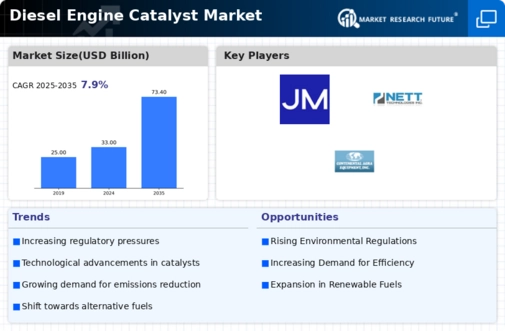


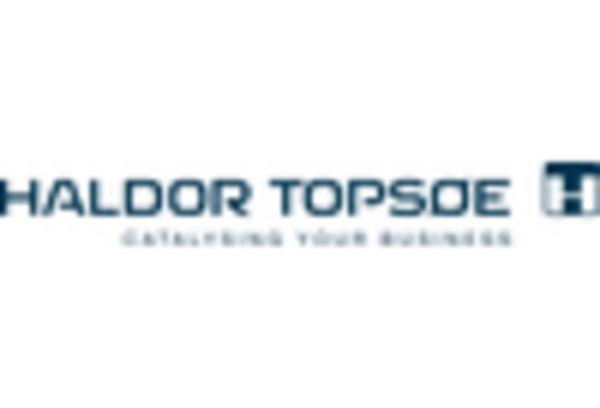
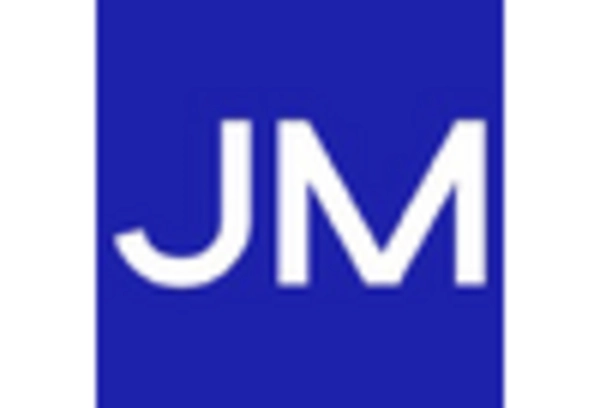
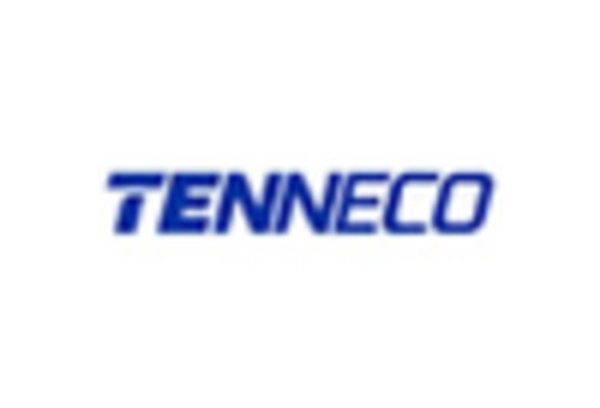
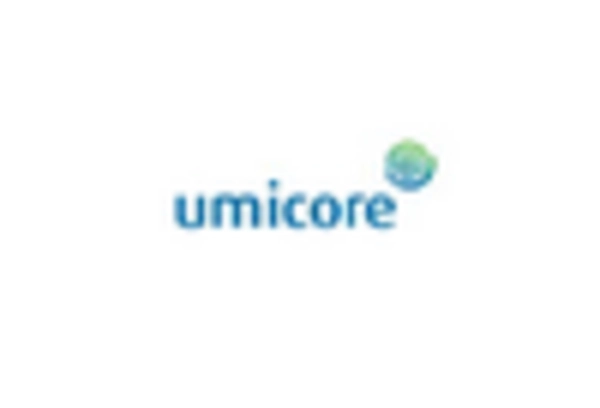









Leave a Comment